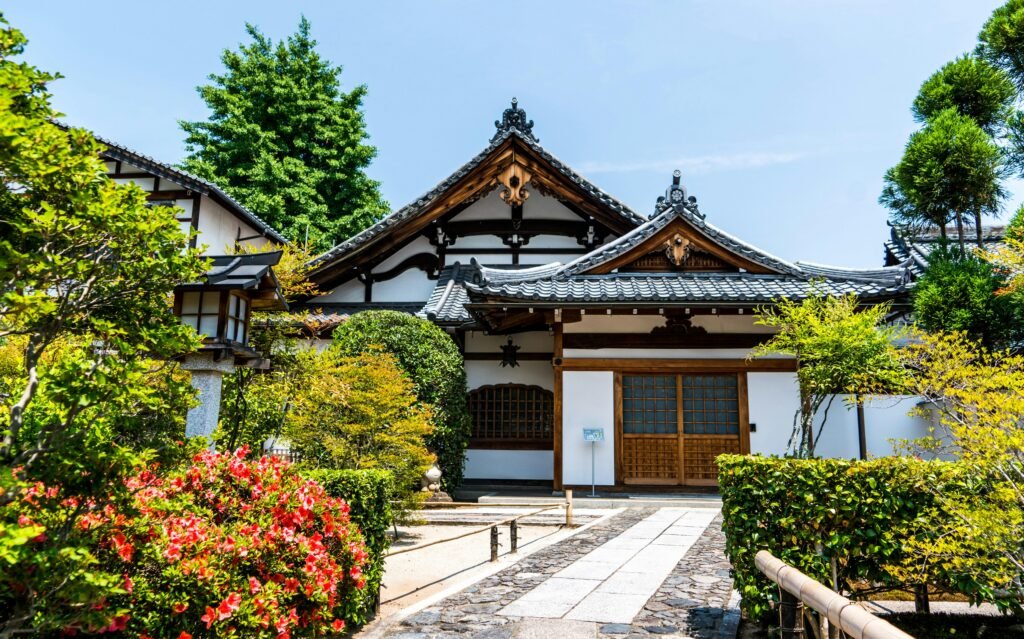Hello Wanderer! Trip planning shouldn’t feel like homework—this two-week Japan itinerary makes it simple.
It’s designed to give you the best of both worlds: authentic cultural adventures and moments to recharge. You’ll experience Tokyo’s bustling streets, the shrines of Nikko, the iconic Mount Fuji, Kyoto’s temples, Osaka’s lively neighborhoods, Hiroshima’s history, Nara’s friendly deer, and Takayama’s mountain charm—all at a pace that feels exciting yet unhurried.
I remember when I planned my first trips, I felt that same mix of excitement and pressure to fit everything in. What I learned is that the best journeys come down to balance: the thrill of discovery alongside time to pause and connect more deeply. That’s the approach I’ve taken in building this guide—to give you a smooth, stress-free two-week adventure you’ll never forget.
This itinerary lays everything out for you, day by day, with tips on transportation, the best neighborhoods to stay in, and recommendations for hotels, local dishes, and unique experiences. We’ve also planned it to minimize hotel changes and maximize the value of your Japan Rail Pass, so you can explore efficiently while still enjoying the journey at an easy pace. Think of it as your complete companion to discovering Japan.
Short on time? My 1-week Japan itinerary covers the highlights while keeping the pace relaxed.
This post may contain affiliate links. If you make a purchase or booking through one of them, I may earn a small commission—at no extra cost to you. It’s a simple way to support this blog and help me keep sharing useful travel guides. Thank you for your support!
Quick Facts about Traveling to Japan
- Best time to visit Japan: March to May (cherry blossom season) and September to November (autumn colors)
- Official language: Japanese
- Currency used in Japan: Japanese Yen (JPY)
- 1 USD ≈ ¥145
- 1 EUR ≈ ¥157
- Is Japan safe for tourists? Yes, it’s considered one of the safest countries in the world — just follow basic travel etiquette.
- Main religion in Japan: Shinto and Buddhism
- Ideal trip duration: A 2 week trip in Japan is perfect for first-time visitors, but even 10 days can give you a well-rounded experience.
- Japan travel budget: Mid- to high-range; rail passes help save on transportation. For updated prices, check the Cost of Living in Japan.
How to Get to Japan
Getting to Japan is simple and convenient, with most international travelers arriving by air. Tokyo’s two main airports — Narita International Airport (NRT) and Haneda Airport (HND) — handle the majority of long-haul flights, while Kansai International Airport (KIX) in Osaka is another great entry point if your Japan itinerary focuses on western Japan.
Direct flights are available from major cities in North America, Europe, and Asia, making Japan highly accessible. Once you land, Japan’s world-famous Shinkansen (bullet trains) connect you quickly to Tokyo, Kyoto, Osaka, Hiroshima, and beyond, making it easy to follow any Japan travel itinerary without needing a car.
How to Get Around Japan
Japan’s transportation system is world-class, making it easy to explore cities, countryside, and everything in between. If you’re planning a 2 week Japan itinerary, knowing your options will save you time and make your trip more enjoyable. From bullet trains and buses to rental cars and taxis, there’s a convenient way to get wherever you need to go. In this guide, we’ll cover the main ways to get around and share tips to make your 2 weeks in Japan smooth and stress-free.
1. Domestic Flights
Flying is the fastest way to cover long distances, especially if your itinerary includes Hokkaido or Okinawa. Major airlines like Japan Airlines (JAL) and All Nippon Airways (ANA) connect Tokyo, Osaka, and other regional cities. Low-cost carriers (like Peach or Jetstar Japan) also offer affordable options. If traveling during peak seasons, book flights in advance for the best fares— platforms like Trip.com make it easy to compare airlines and find the best deals in advance.
2. Rental Cars
If your Japan trip includes rural areas such as the Japanese Alps, Shikoku, or Hokkaido, renting a car gives you freedom to explore. In cities like Tokyo or Kyoto, however, public transport is far more convenient. For rentals, check Nippon Rent-A-Car or Toyota Rent a Car. Reserve ahead if you’re traveling during holidays like Golden Week or Obon.
3. Public Transportation
Japan’s trains and buses are world-class. The Shinkansen (bullet train) links Tokyo, Kyoto, Osaka, and Hiroshima quickly and comfortably. A Japan Rail Pass is highly recommended for anyone following a Japan itinerary of 2 weeks, as it saves money on long-distance travel. For planning routes, HyperDia and JR East are excellent tools. Book Shinkansen tickets in advance if you’re traveling during peak seasons.
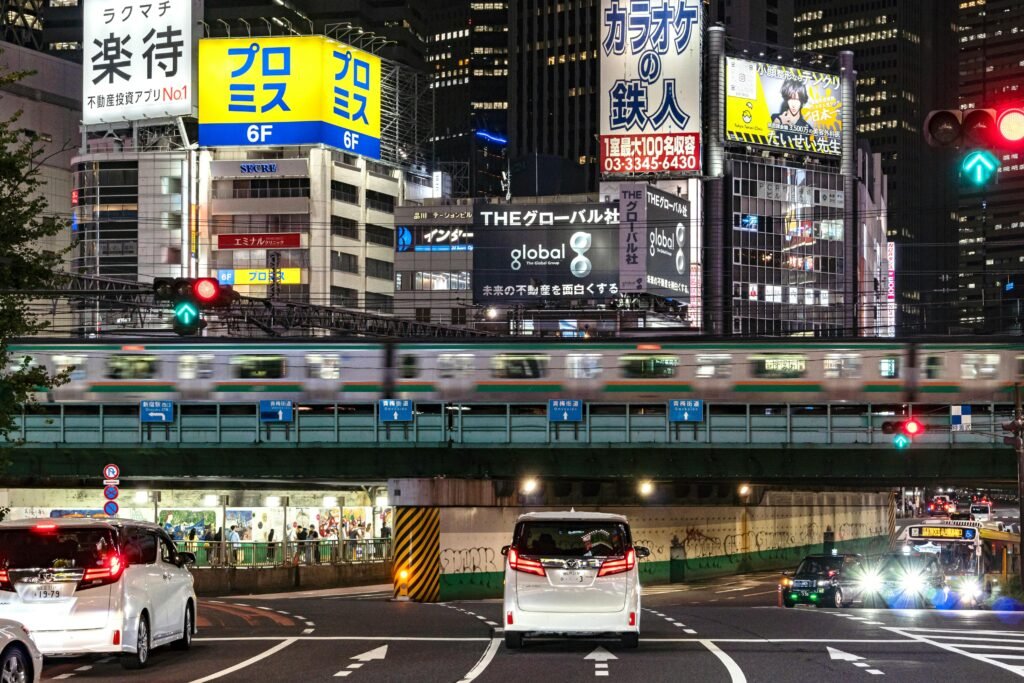
4. Shuttle Services
Airport and hotel shuttles are a stress-free way to transfer with luggage, especially when you first arrive. Companies like Airport Limousine Bus connect Narita and Haneda airports to major Tokyo neighborhoods. For a more personalized experience, consider Welcome Pickups, which offers private airport transfers with an English-speaking driver who meets you at arrivals. Booking ahead online guarantees your seat and a smooth start to your trip.
5. Taxis and Ride-Sharing
Taxis in Japan are clean, safe, and reliable, though more expensive than trains or buses. They’re best for late nights or short trips. Apps like JapanTaxi make it easy to hail a cab. Ride-sharing options like Uber exist but are limited to certain areas. No advance booking is necessary for taxis, though apps can make things smoother.
Tips for Getting Around Japan
- Get a Japan Rail Pass early: Buy it online before arriving in Japan for the best price.
- Use IC cards (Suica, Pasmo, ICOCA): These reloadable cards simplify buses, subways, and even convenience store purchases.
- Download apps: HyperDia ,JR East and Google Maps make navigating Japan’s trains effortless.
Your Two Week Itinerary in Japan
Day 1 – Arrival in Tokyo
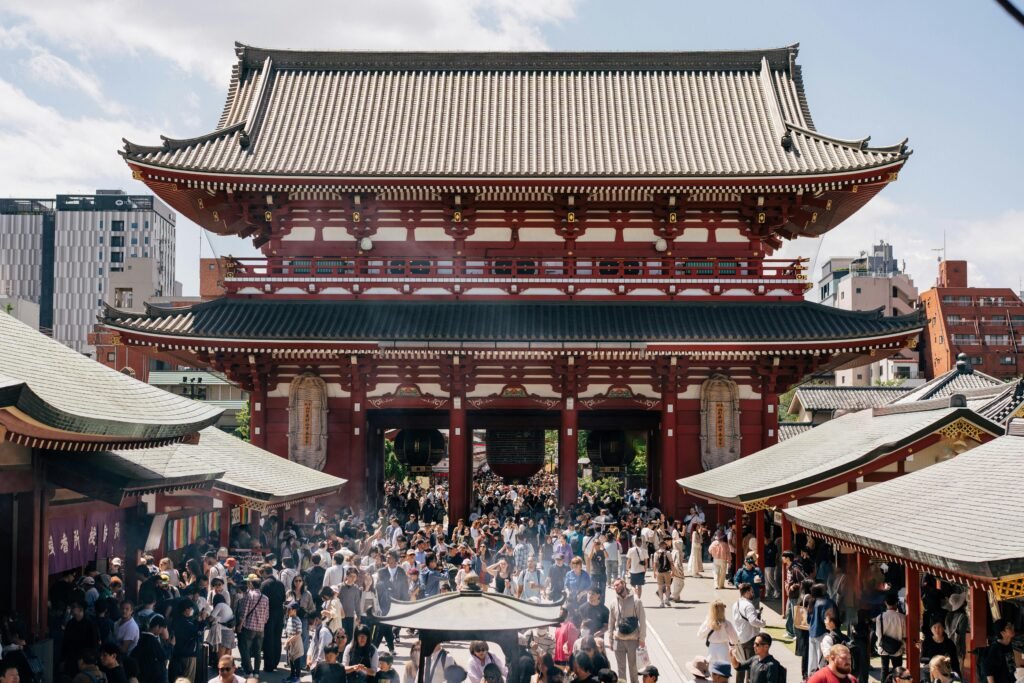
Morning
Welcome to Japan ! Arrive at Tokyo Haneda (HND) or Narita (NRT). Then check into your hotel and freshen up before exploring the city.
Transport Options :
- From Narita, take the Narita Express (N’EX) to Tokyo Station (~60 min, $30 USD , JR Pass covered ).
- From Haneda, take the Tokyo Monorail (Covered by JR Pass only partially ) to Hamamatsuchō Station (~20 min, $5 USD) or the Keikyu Line to Shinagawa (~15 min, $5 USD).
For a more comfortable and hassle-free option, especially if you have luggage or arrive late at night, book a private transfer with Welcome Pickups. Your driver will meet you at arrivals and take you directly to your hotel.
Afternoon
Take a leisurely walk through Asakusa, starting with the famous Sensō-ji Temple. Wander along Nakamise Street, where you can sample local treats like taiyaki (a warm fish-shaped cake filled with red bean or custard), age-manju (crispy fried sweet buns), and senbei (savory rice crackers).
Transport :
- Take the Tokyo Metro Ginza Line to Asakusa Station (~$1.50 USD).
Sensō-ji is Tokyo’s oldest and most famous Buddhist temple, dating back to the 7th century. Enter through the striking Kaminarimon Gate, with its massive red lantern, then wander along Nakamise Street, a lively shopping lane that has served temple visitors for centuries.Inside the temple grounds, join locals in wafting incense smoke for good fortune, admire the vivid architecture, and soak in the spiritual atmosphere. Don’t forget to look across the Sumida River for a view of the modern Tokyo Skytree, a striking contrast to Asakusa’s traditional charm.
Evening
Enjoy dinner at a cozy izakaya-style restaurant or a casual local eatery. A great choice to try is yakitori—grilled chicken skewers served fresh off the grill.
Where to Stay in Tokyo
Hotel/Neighborhood Tip: For convenience and ease of transport on the first day, stay in Asakusa, Ueno, or Tokyo Station area — central, well-connected, and perfect to start your 2 week Japan itinerary.
Here are some great picks for different budgets:
- Budget-Friendly: Stay comfortable without breaking the bank – check out this Tokyo budget hotel option.
- Mid-Range: A balance of comfort, convenience, and price – see this recommended mid-range hotel.
- Luxury: For travelers who want top-class service and stunning views, this luxury Tokyo hotel is an excellent choice.
Recommended Tours & Experiences
If you’d like to enrich your Tokyo experience, here are some unique activities worth adding to your itinerary:
- Watch a Sumo Show – Get a glimpse of Japan’s national sport with a live Tokyo Sumo Show, perfect for travelers interested in traditional culture.
- Learn to Make Sushi – Join a hands-on Sushi Making Class and master this iconic Japanese dish with the help of local chefs.
- Sumida River Dinner Cruise – Enjoy city views while dining on board a traditional yakatabune boat with this Sumida River Cruise experience.
- Fast & Furious Tokyo Drift Experience – For something completely different, thrill-seekers can join the Tokyo Drift Driving Experience inspired by the Fast & Furious films.
Day 2 – Tokyo: Tradition & Modernity
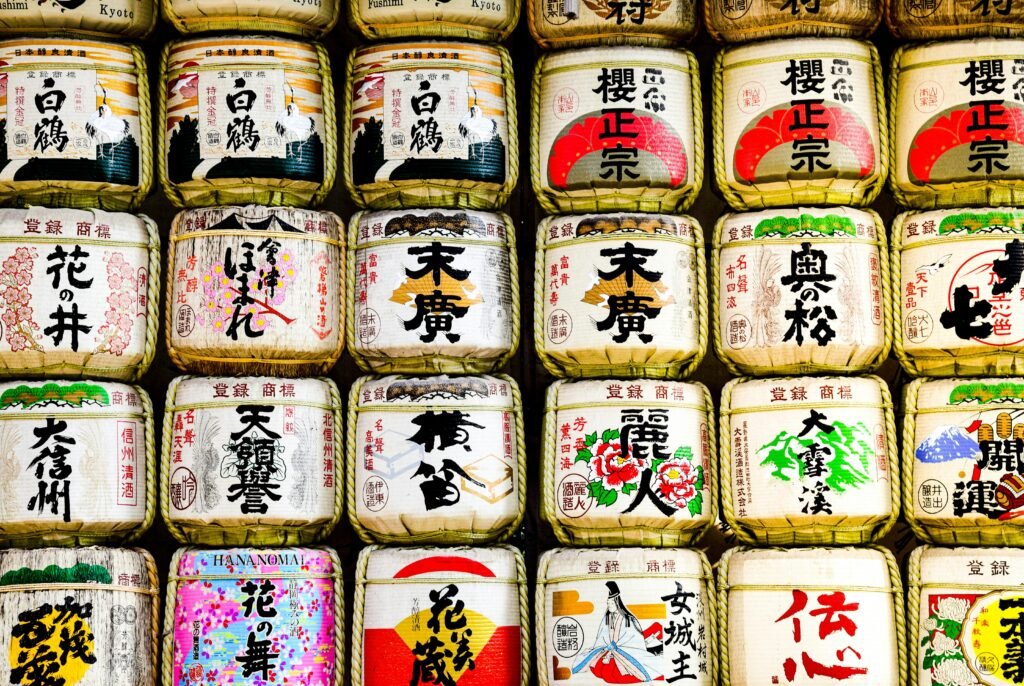
Morning
Visit Meiji Shrine and wander through Yoyogi Park. Enjoy the serene forested paths of Meiji Shrine and the open spaces of Yoyogi Park, a perfect introduction to Tokyo’s mix of tradition and modernity.
Transport :
- From your hotel, take the JR Yamanote Line to Harajuku Station (~15–20 min, $1.50–$2 USD ,JR Pass covered ).
Afternoon
Spend some time exploring Harajuku, including the bustling Takeshita Street, and then head to Shibuya to soak up the shopping and vibrant city atmosphere. Don’t miss the street snacks in Harajuku—try crepes filled with fresh fruit and custard, taiyaki with sweet red bean or custard, or a creamy soft cream (Japanese-style ice cream).
Transport :
- Walk from Harajuku to nearby shopping spots, or take the JR Yamanote Line one stop to Shibuya Station (~5 min, $1 USD ,JR Pass covered ).
Harajuku is Tokyo’s youth culture hub, famous for its quirky fashion boutiques, themed cafés, and colorful street art. Takeshita Street is the heart of it all, a lively pedestrian lane packed with unique shops selling everything from eccentric clothing to kawaii (cute) accessories.
From here, you can walk to nearby Omotesandō, often called Tokyo’s Champs-Élysées, known for its stylish boutiques and modern architecture. Or, hop on the JR Yamanote Line one stop (~5 min, $1 USD, JR Pass covered) to Shibuya, Tokyo’s buzzing shopping and entertainment district.
Shibuya is home to the world-famous Shibuya Crossing, where hundreds of people cross from all directions at once — an iconic Tokyo experience. You’ll also find endless shopping options, from high-end malls like Shibuya Scramble Square to youth-oriented fashion stores, plus countless restaurants and cafés to soak in the city’s energy.
Evening
Cross the famous Shibuya Scramble and enjoy dinner at a local ramen shop.
Transport :
- Walk back to your hotel or take the JR line if staying farther away (~$1–$2 USD, 5–10 min ,JR Pass covered ).
Day 3 – Tokyo: Markets & Skytree Views
Morning
Begin your day at Tsukiji Outer Market, known for its fresh seafood and traditional Japanese snacks. Be sure to try local favorites like uni (sea urchin) sushi, ebi (shrimp) tempura, or kani (crab) croquettes—classic treats that make Tsukiji so iconic.
Transport :
- From your hotel, take the Tokyo Metro Hibiya Line to Tsukiji Station (~15–25 min, $2–$3 USD).
Afternoon
Take a stroll through Ueno Park and visit the Tokyo National Museum, or soak up the lively atmosphere at Ameya-Yokocho Market. Ueno Park offers peaceful walking paths and a dose of cultural charm, while Ameya-Yokocho is perfect for sampling local treats like taiyaki filled with matcha cream, fresh melon pan, or savory grilled squid skewers.
Transport :
- From Tsukiji, take the Tokyo Metro Hibiya Line to Ueno Station (~20 min, $2.50 USD).
Evening
End the day with sunset views from Tokyo Skytree or Tokyo Tower, where you can enjoy stunning panoramic vistas of the city. For dinner, try a comforting local meal such as seafood donburi, a vegetable tempura set, or chicken katsu curry.
Transport :
- To Tokyo Skytree: Take the Tokyo Metro Hibiya Line to Oshiage Station (~30 min, $3 USD).
- To Tokyo Tower: Take the JR Yamanote Line to Hamamatsuchō Station (~25 min, $2 USD , JR Pass covered ).
Day 4 – Nikko Day Trip
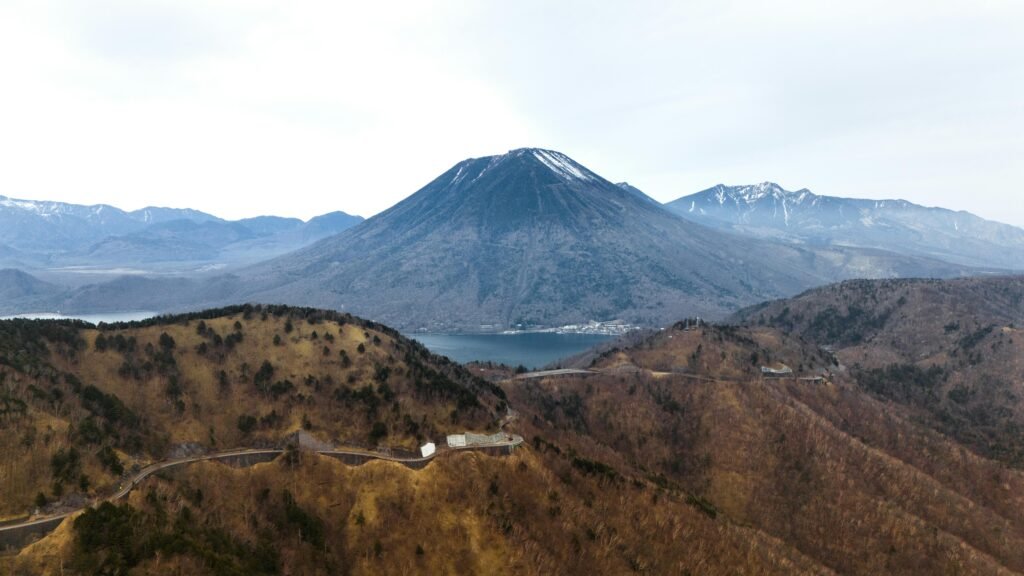
Morning
Take a train to Nikko, a UNESCO World Heritage site.
Transport :
🚄 Fastest route to Nikko (Shinkansen option, JR Pass covered )
- From Tokyo Station, take the JR Tohoku Shinkansen to Utsunomiya (~50 min).
- Fare: $34–37 USD.
- At Utsunomiya, transfer to the JR Nikko Line to Nikko Station (~45 min).
- Fare: $6–7 USD.
Total: ~1 hr 45 min, $40–44 USD.
- Fare: $6–7 USD.
🚃 Cheaper route to Nikko (Regular JR train , JR Pass covered )
- From Tokyo Station, take the JR Utsunomiya Line (Rapid) to Utsunomiya (~1 hr 45 min).
- Fare: $18 USD .
- At Utsunomiya, transfer to the JR Nikko Line to Nikko Station (~45 min, $6–7 USD).
Total: ~2 hr 30 min, $24–25 USD .
Visit the ornate Toshogu Shrine, dedicated to Tokugawa Ieyasu.
Transport :
1️⃣ By Bus (most convenient for sightseeing)
- Take the Tobu / Nikko City Loop Bus or Tobu Bus bound for Chuzenji / Yumoto Onsen.
- Stop: Shinkyo Bridge / Toshogu Shrine.
- Travel time: ~10–15 minutes.
- Fare: ¥210–230 ($1.50–2 USD) one way.
- Frequency: Every 15–20 minutes.
2️⃣ By Walk (if you like strolling)
- It’s about 2 km (1.2 miles) from Nikko Station to Tōshō-gū.
- Walking time: ~25–30 minutes.
- Route is scenic, passing some shops and local streets.
Located about two hours north of Tokyo, Nikko is a mountain town known for its stunning shrines, natural beauty, and peaceful atmosphere. The highlight is Toshogu Shrine, a lavishly decorated complex dedicated to Tokugawa Ieyasu, the founder of the Tokugawa shogunate. The area is filled with intricate carvings, gold leaf details, and the famous “See No Evil, Speak No Evil, Hear No Evil” monkeys.
Beyond Toshogu, Nikko offers serene landscapes, from Shinkyo Bridge (a photogenic red-lacquered bridge) to waterfalls and hiking trails in Nikko National Park. The mix of cultural heritage and natural scenery makes it one of Japan’s most rewarding day trips.
Afternoon
Discover the natural beauty of Nikko National Park, from the majestic Kegon Falls to the serene Lake Chuzenji. Along the way, be sure to try local specialties like yuba (tofu skin dishes), soba noodles with mountain vegetables, or ayu (sweetfish) grilled on a stick.
Transport :
- From Nikko Station, take a Tobu bus to Chuzenji Onsen station (~40–50 min, ~$16 USD round trip).
💡 Pro tip: If you’re visiting multiple sites (Kegon Falls, Lake Chuzenji, maybe Yumoto Onsen), it’s cheaper to buy the Tobu Nikko All Area Pass or the Chuzenji Onsen Free Pass — unlimited bus rides in the area.
Kegon Falls, one of Japan’s most famous waterfalls, plunges 97 meters into a dramatic gorge — you can admire it from observation platforms or take an elevator down for a closer view. Nearby Lake Chuzenji, formed by volcanic activity, is a serene spot ideal for leisurely walks, boat rides, or enjoying seasonal views: cherry blossoms in spring, vibrant foliage in autumn, and snow-covered landscapes in winter.
Evening
Return to Tokyo along the same route, fully covered by your JR Pass (~2 hr 30 min, $24–25 USD via regular JR, or ~1 hr 45 min, $40–44 USD via Shinkansen). For dinner near your hotel, enjoy comforting options like donburi with seasonal toppings, chilled soba noodles, or tempura over rice (tendon).
Recommended Tour
For a deeper experience of Nikko’s highlights, consider joining a guided tour. This Nikko Full-Day Tour includes visits to Toshogu Shrine, Kegon Falls, Lake Chuzenji, and other scenic spots, all with an expert guide who provides local insights and handles transportation. It’s a stress-free way to make the most of your day in Nikko.
Day 5 – Mount Fuji & Hakone
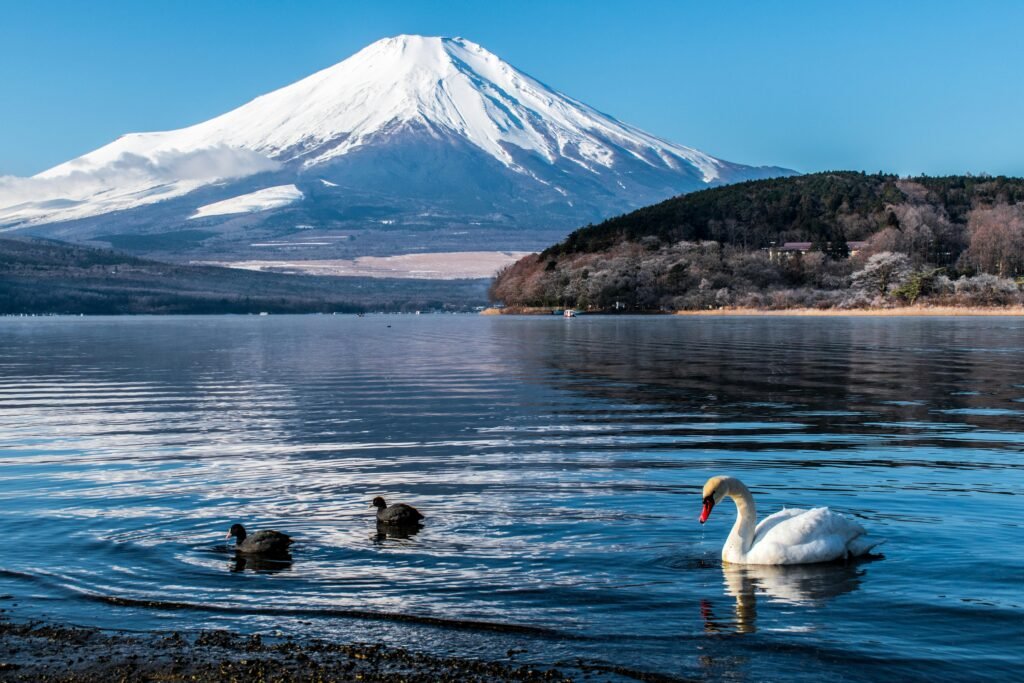
Morning
Take a train from your nearest major Tokyo station to Hakone-Yumoto. Hakone is a must-visit for its breathtaking views of Mt. Fuji, dramatic volcanic landscapes, and serene lakes. Ride the ropeway above steaming valleys and enjoy a tranquil Lake Ashi cruise, offering stunning mountain views — perfect for photography, relaxation, and immersing yourself in Japan’s natural beauty in just one scenic day.
Transport :
- You can choose the Odakyu Romancecar (~90 min, $20 USD, fastest) or the Odakyu Line Rapid/Express (~2 hrs, $8–10 USD, more budget-friendly).
💡 Pro tip: Pick up the Hakone Free Pass (~$45 – 50 USD) for unlimited rides on buses, the Hakone Ropeway, and a Lake Ashi cruise.
Afternoon
Unwind in a traditional onsen (hot spring), one of Hakone’s highlights.
For a relaxing soak, visit a public onsen such as Tenzan Onsen (~$12 USD entry).
After your soak, try local specialties like black eggs from Owakudani (boiled in volcanic springs), Hakone manju (sweet buns with red bean filling), or soba noodles with mountain vegetables.
Evening
Return to your hotel in Tokyo .
Transport :
- Odakyu Romancecar: Hakone-Yumoto → Shinjuku (~90 min, $20 USD, seat reservation needed).
- Odakyu Rapid/Express: Hakone-Yumoto → Odawara → Shinjuku (~2 hrs, $8–10 USD).
💡 Pro tip: If you purchased the Hakone Free Pass with Romancecar, your return is already covered.
Recommended Tour
For a hassle-free way to experience Hakone and Mount Fuji in one day, consider this Full-Day Excursion. The tour includes a ride on the Hakone Ropeway, a visit to the volcanic Owakudani Valley, and a scenic cruise across Lake Ashi, all with stunning views of Mount Fuji. With transportation and guidance handled by experts, it’s the perfect option to enjoy the best of Hakone without worrying about logistics.
Day 6 – Kyoto Arrival
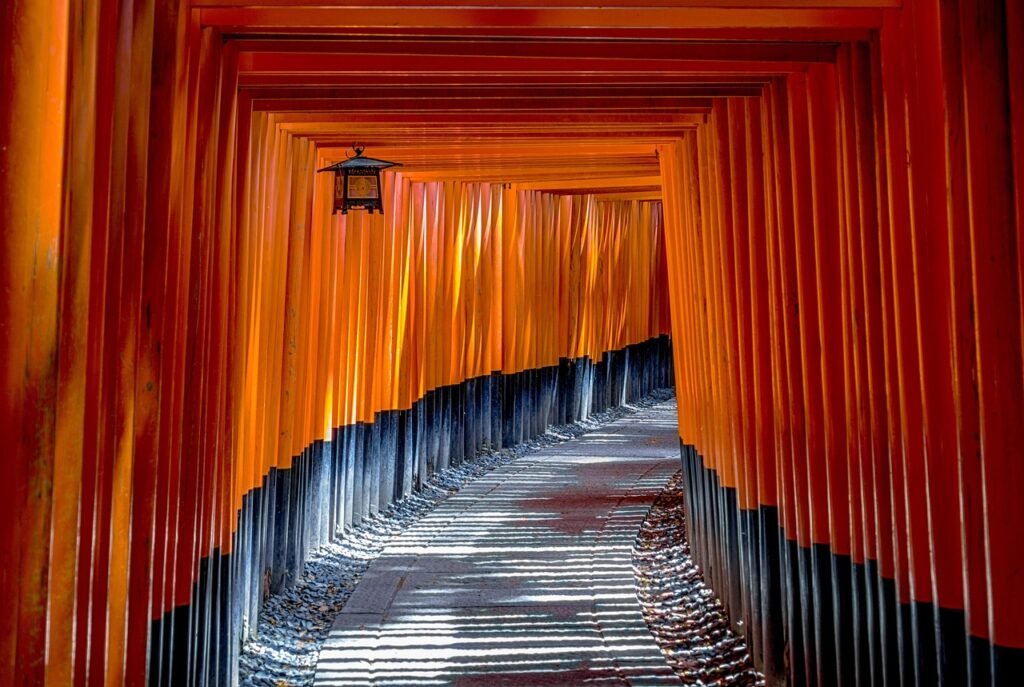
Morning
Take the Shinkansen (bullet train) from Tokyo to Kyoto Station. Sit back and enjoy views of Mount Fuji along the way.
Transport :
- Take the Tokaido Shinkansen (bullet train) from Tokyo to Kyoto Station (~2 hrs 20–30 min). Fare: ~$110 USD one-way (covered by JR Pass if you take Hikari or Kodama).
Kyoto is Japan’s cultural heart, home to over 1,000 temples and shrines, including iconic sites like Kinkaku-ji and Fushimi Inari Taisha. The city’s historic streets, serene gardens, and traditional tea houses offer a glimpse into Japan’s rich heritage and seasonal beauty. Kyoto is also a food lover’s paradise, known for kaiseki cuisine, matcha treats, and local specialties, making it a must-visit destination.
Afternoon
Head to the iconic Fushimi Inari Shrine, famous for its thousands of vermilion torii gates winding up the hillside.Enjoy a light snack from nearby stalls such as kitsune udon (udon with fried tofu) or inari sushi (rice wrapped in sweet tofu skin) — both linked to the shrine’s fox deity.
Transport :
- From Kyoto Station, take the JR Nara Line to Inari Station (~5 min, $2 USD , JR Pass covered ).
Evening
Stroll through the atmospheric Gion district, known for its historic tea houses and geisha culture. Dinner options in Gion include kaiseki-style meals, grilled river fish, or yudofu (tofu hot pot), a Kyoto specialty. If you’re lucky, you may spot a geisha or maiko (apprentice geisha) on their way to evening appointments.
Transport :
- From Fushimi Inari, take the Keihan Main Line to Gion-Shijo Station (~10 min, $2 USD).
Where to stay in Kyoto
Hotel/Neighborhood Tip: Stay near Gion, Higashiyama, or around Kyoto Station for easy access to sightseeing spots, traditional dining, and cultural immersion.
Here are some options for different budgets:
- Budget-Friendly: Comfortable and affordable — check out this Kyoto budget hotel.
- Mid-Range: A perfect balance of comfort and convenience — see this recommended mid-range hotel.
- Luxury: For travelers seeking top-class amenities and prime locations, this luxury Kyoto hotel is an excellent choice.
Recommended Experiences
Make your Kyoto visit unforgettable with these unique cultural activities:
- Tea Ceremony in Kimono: Immerse yourself in tradition with a matcha tea ceremony and sweet treats while dressed in a beautiful kimono.
- Kendo & Samurai Experience: Learn the art of the samurai with authentic uniforms and equipment in this Kendo & Samurai experience.
- Calligraphy Class: Try your hand at traditional Japanese writing in a serene setting with this calligraphy class in a central Buddhist temple.
- Gion Night Walking Tour: Explore the enchanting streets of Gion after dark and discover the world of geishas on this magical night walking tour.
Day 7 – Kyoto: Temples & Tea
Morning
Begin your day at the iconic Kinkaku-ji (Golden Pavilion), one of Kyoto’s most famous landmarks. Its stunning architecture is matched by its history—it was originally a 14th-century retirement villa for shogun Ashikaga Yoshimitsu before becoming a temple. Afterward, visit nearby Ryoan-ji, famous for its tranquil Zen rock garden (accessible by bus or a 20-minute walk).
For a snack, try yatsuhashi, a cinnamon-flavored Kyoto treat, or indulge in matcha soft cream, commonly found around the temple areas.
Transport :
- From Kyoto Station, take the Kyoto City Bus #101 or #205 to Kinkaku-ji (~40 min, $2.50 USD).
Afternoon
Head to Arashiyama, known for its serene Bamboo Grove and Monkey Park Iwatayama. Stroll along the peaceful bamboo paths, then hike up to the monkey park for panoramic views of Kyoto. For lunch, try local favorites like soba noodles with mountain vegetables or unagi don (grilled eel rice bowl).
Transport :
- From Ryoan-ji, take the Keifuku Kitano Line to Katabiranotsuji, then transfer to the Keifuku Arashiyama Line (~30 min, $3 USD).
Evening
Return to central Kyoto for a traditional tea ceremony, with many teahouses around Gion and Higashiyama offering 45–60 minute sessions (~$20–$30 USD). Afterward, take a peaceful stroll along the Kamo River—a lovely way to unwind. For dinner, enjoy Kyoto-style small dishes (obanzai), vegetable tempura, or grilled seasonal fish.
Day 8 – Nara Day Trip
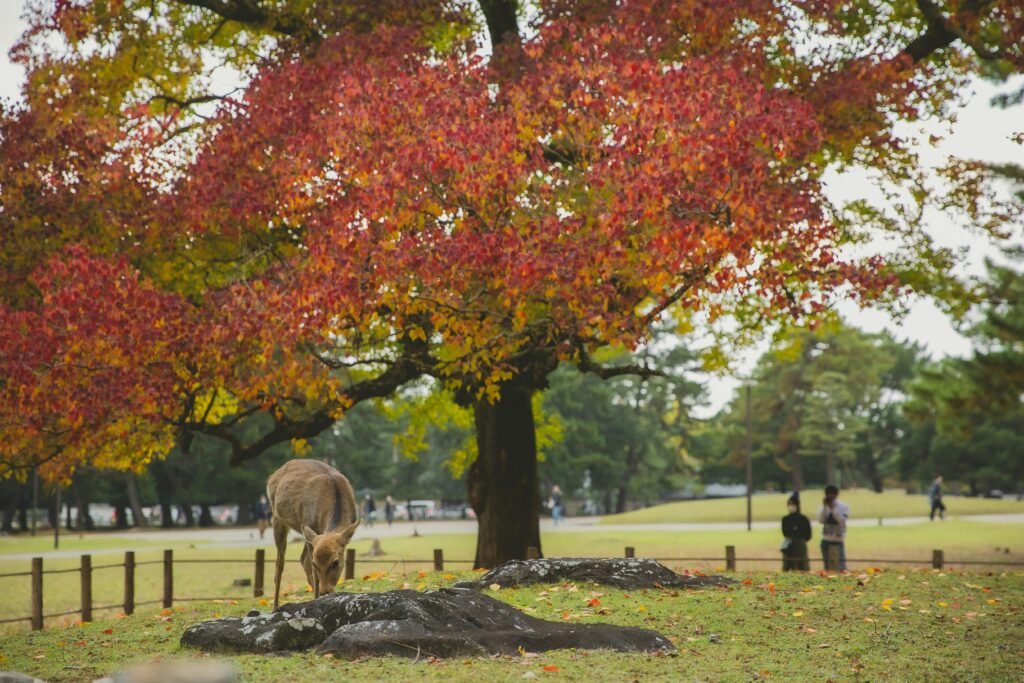
Morning
Take a trip from Kyoto to Nara, Japan’s first permanent capital and a highlight on any Japan itinerary. Explore the impressive Todai-ji Temple, home to the Great Buddha, and spend some time with the friendly, free-roaming deer in Nara Park. For local treats, try kakinoha-zushi (sushi wrapped in persimmon leaves) or freshly pounded mochi, a Nara specialty.
Transport :
- From Kyoto Station, take the JR Nara Line Rapid (~50 min, $7 USD , JR Pass covered ) or the Kintetsu Limited Express (~35 min, $12 USD).
Nara, Japan’s first permanent capital, is famous for its ancient temples, shrines, and rich cultural heritage. It’s home to the iconic Todai-ji Temple, housing the massive Great Buddha statue, and the serene Kasuga Taisha Shrine surrounded by forested paths. Visitors also love Nara Park, where friendly deer roam freely, creating a unique and unforgettable experience that blends history, nature, and local tradition.
Afternoon
Stroll through Kasuga Taisha Shrine, famous for its hundreds of stone and bronze lanterns. From Nara Park, it’s a short 10–15 min walk. Nearby, try chagayu (rice porridge with tea) or somen noodles, light and refreshing options after sightseeing.
Evening
Return to Kyoto by train (~35–50 min, $7–$12 USD). Once back, enjoy a light, refreshing meal nearby—chagayu (rice porridge with tea) or chilled somen noodles are perfect choices after a day of sightseeing.
Recommended Tour
Make your trip from Kyoto to Nara effortless and enriching with this morning guided tour of Nara. The tour covers Nara’s highlights, including Todai-ji Temple, Kasuga Taisha Shrine, and Nara Park, where you can interact with the friendly deer. With a knowledgeable guide handling transportation and insights, it’s an easy way to experience Nara’s history, culture, and natural beauty in a single morning.
Day 9 – Kyoto: Last Day & Osaka Day Trip
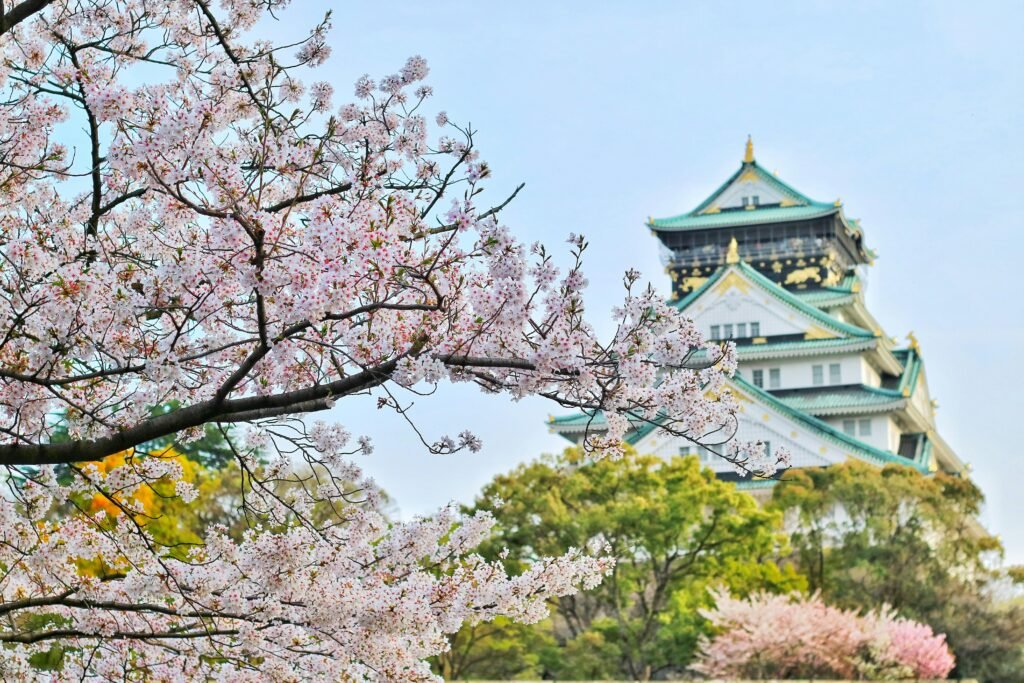
Morning
Stroll along the scenic Philosopher’s Path and visit Ginkaku-ji (Silver Pavilion). This peaceful, tree-lined walkway follows a canal and is especially beautiful during cherry blossom and autumn foliage seasons. At the end lies Ginkaku-ji, a Zen temple known for its elegant architecture, reflective ponds, and serene gardens — a perfect spot for a calm, contemplative visit.
Transport :
- Take the Kyoto City Bus or taxi to Ginkaku-ji (~$2–$5 USD).
Afternoon
Visit Osaka Castle and its park — enjoy views of the moat and gardens. It is renowned for its impressive architecture, rich history, and beautiful surrounding gardens, offering a glimpse into Japan’s feudal past. For lunch, try kushikatsu (deep-fried skewers) or yakisoba (stir-fried noodles), specialties of Osaka.
Transport :
- Catch the JR Special Rapid Service to Osaka (~30 min, ~$6 USD , JR Pass covered).
Osaka is Japan’s vibrant culinary and entertainment hub, famous for street food like takoyaki (octopus balls) and okonomiyaki (savory pancake). The city combines modern attractions such as Universal Studios Japan with historic sites like Osaka Castle. With lively nightlife, bustling shopping districts, and friendly locals, Osaka offers a fun and energetic contrast to Japan’s more traditional cities.
Evening
Walk through Dotonbori Street for neon lights and local street food such as takoyaki (octopus balls) , okonomiyaki (savory pancake) , ikayaki (grilled squid) or taiyaki (sweet fish-shaped cake).
Transport :
- Return to Kyoto by train (~30 min, ~$6 USD , JR Pass covered ).
Recommended Experiences
- Osaka Highlights by Bike: Explore the city’s top sights on a 5-hour bike tour with lunch included, combining sightseeing, local culture, and fun exercise.
- Guided Walking Tour: Discover Osaka’s bustling neighborhoods and hidden gems on this guided walking tour, perfect for first-time visitors wanting a local perspective.
Day 10 – Hiroshima & Miyajima
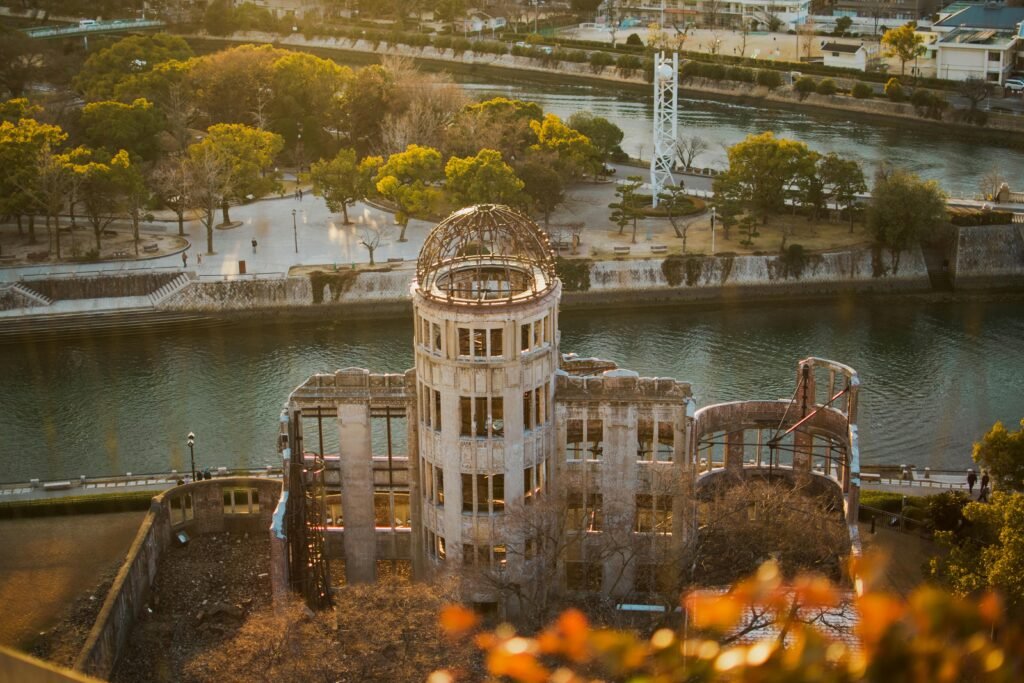
Morning
Travel to Hiroshima by train . Explore the Peace Memorial Museum and see the iconic A-Bomb Dome, reflecting on history and resilience. The museum offers powerful exhibits on the 1945 atomic bombing, while the A-Bomb Dome stands as a solemn symbol of destruction and hope.
Transport :
- Take the Sanyo Shinkansen from Kyoto to Hiroshima (~1 hr 45–2 hrs, ~$110 USD one-way; covered by JR Pass if you use the Sakura/Hikari).
- From Hiroshima Station, take the tram to Peace Memorial Park (~15 min, ~$1.50 USD).
Afternoon
Admire the iconic floating torii gate at Itsukushima Shrine. From the ferry terminal, walk to the shrine to see the gate up close, then explore the charming Omotesando Street. If time allows, visit Daisho-in Temple or take the Mt. Misen ropeway for stunning panoramic views before returning to the ferry.
For a local treat, try momiji manju—maple-leaf-shaped cakes filled with red bean or custard, a specialty unique to Miyajima.
Transport :
- Take a JR ferry from Miyajima-guchi (~10 min, $3 USD , covered by JR Pass) to see the famous floating torii gate at Itsukushima Shrine.
Evening
Stay in a hotel near Hiroshima Station for convenience or in Miyajima for a scenic, tranquil evening experience.
Where to stay in Hiroshima or Miyajima
Hotel/Neighborhood Tip:
- Hiroshima Station area – ideal for Shinkansen connections and city access.
- Miyajima Island – perfect for scenic views, quiet streets, and early morning shrine visits.
Here are options for every budget:
- Budget-Friendly: Comfortable and affordable — check out this Hiroshima budget hotel.
- Mid-Range: A balance of comfort, convenience, and price — see this recommended mid-range hotel.
- Luxury: For travelers seeking top-class amenities and prime locations, this luxury Hiroshima hotel is an excellent choice.
Recommended Experiences
- UNESCO Hiroshima & Miyajima Day Tour: Explore Hiroshima’s historic sites and the iconic Itsukushima Shrine on Miyajima Island with this full-day guided tour, perfect for first-time visitors.
- Traditional Japanese Archery: Try your hand at kyūdō, the art of Japanese archery, on this authentic archery experience, offering a hands-on cultural activity.
Day 11 – Hiroshima to Takayama
Morning
Take a trip from Hiroshima to Takayama . Enjoy mountain and countryside views along the route — a relaxing travel experience in your Japan 2 week itinerary.
Transport :
- Take the Shinkansen from Hiroshima to Nagoya (~1 hr 45 min), then transfer to the JR Limited Express Wide View Hida to Takayama (~2 hr 30 min). Total travel time: ~4–4.5 hrs, costing ~$165 USD without a JR Pass (covered if you have one).
With the JR Pass (fully covered) , your journey should look like this:
- Hiroshima → Nagoya: Take the Shinkansen (Hikari or Sakura) to Nagoya (~1 hr 45 min).
- Nagoya → Takayama: Transfer to the JR Limited Express Wide View Hida to Takayama (~2.5 hr).
Total travel time: Approximately 4.5 hours.
Takayama is a beautifully preserved Edo-period town in the Japanese Alps, famous for its traditional wooden houses, morning markets, and charming old streets. Visitors can explore the historic Sanmachi Suji district, sample local delicacies like Hida beef, and enjoy nearby cultural attractions like the Hida Folk Village. The best times to visit are spring (March–May) for cherry blossoms and autumn (October–November) for vibrant fall foliage, when the town is at its most picturesque.
Afternoon
Take a leisurely stroll through Takayama’s preserved Edo-era streets, where traditional wooden houses, quaint shops, and local sake breweries create a charming atmosphere. Don’t miss local treats like gohei mochi (grilled rice cakes with sweet miso) or Hida beef croquettes—specialties unique to this region.
Evening
Check into a ryokan (Traditional Japanese inn) and enjoy a kaiseki-style dinner featuring Hida beef and seasonal vegetables. And relax in the ryokan’s onsen (hot spring bath) for a quintessential Takayama experience.
Where to stay in Takayama
Hotel/Neighborhood Tip: Stay near Sanmachi Suji for easy access to historic streets, local shops, and a peaceful evening atmosphere.
Here are options for every budget:
- Budget-Friendly: Comfortable and affordable — check out this Takayama budget hotel.
- Mid-Range: A balance of comfort and convenience — see this recommended mid-range hotel.
- Luxury: For travelers seeking top-class amenities and prime locations, this luxury Takayama hotel is an excellent choice.
Recommended Tours & Experiences
- Kanazawa & Shirakawa-go Guided Tour: Explore the UNESCO World Heritage village of Shirakawa-go and experience traditional Japanese countryside life on this guided tour.
- Private Takayama Tour: Discover Takayama’s historic streets, local markets, and cultural highlights with a regional guide, perfect for personalized exploration.
- Onigiri & Miso Soup Workshop: Participate in a hands-on cooking experience in a Buddhist temple, learning to make traditional onigiri and miso soup while immersing yourself in local culture.
Day 12 – Takayama & Shirakawa-go
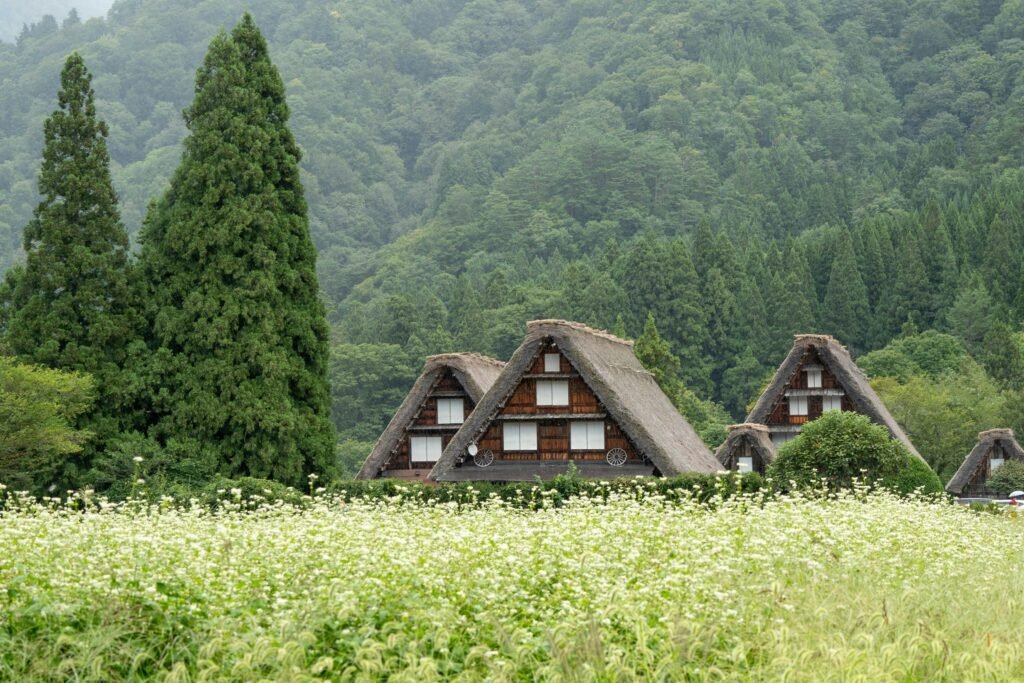
Morning
Stroll through Takayama’s morning market, exploring fresh local produce, crafts, and snacks. Try Hida miso soup, fresh mountain vegetables, or locally grilled skewers for a light breakfast.
Afternoon
Explore the UNESCO-listed village, famous for its thatched-roof gassho-zukuri houses and scenic mountain setting.You can also enjoy a peaceful stroll along the small streams that wind through the village, offering charming photo opportunities at every turn. For local treats, try gohei mochi (grilled rice cakes with sweet miso) or soba noodles, specialties of the region.
Transport :
- Take a Nohi or Kaetsuno bus to Shirakawa-go (~50 min, $8 USD).
Evening
Take Bus back to Takayama (~50 min, $8 USD) for a quiet evening. Check into your hotel and enjoy a relaxed night in the historic town.
Day 13 – Takayama → Tokyo: Scenic, Serene & Relaxing
Morning
Scenic train ride to Tokyo. Enjoy the mountain and countryside views — a perfect moment to unwind in your Japan 2-week itinerary.
Transport :
- Take the JR Limited Express Wide View Hida from Takayama to Nagoya (~2 hr 30 min), then transfer to the Shinkansen (Hikari or Sakura) to Tokyo (~1 hr 45 min). Total travel time: ~4–4.5 hrs, costing ~$165 USD without a JR Pass (covered if you have one).
Afternoon
After arriving in Tokyo, check in at your hotel and freshen up. If you are near Tokyo Station, take the Toei Oedo Line or taxi to Hamarikyu Gardens (15–20 min, $2–$5 USD). Stroll the tranquil gardens and stop at a traditional teahouse for matcha tea and wagashi ($5–$7 USD).
Late Afternoon
- Waspa Ginza (Tokyo, Japan) – Just a 10–15 minute walk from Hamarikyu Gardens, this luxurious spa offers a blend of modern and traditional Japanese treatments designed for relaxation, beauty, and overall well-being in a serene, calming atmosphere.
Treat yourself to a traditional Japanese spa or massage—a wonderful way to unwind and relax after days of sightseeing.
Evening
For dinner, savor seasonal fish, tempura, or sushi at a calm, high-quality restaurant in Ginza. Afterwards, take a leisurely stroll along the illuminated streets to end the night with a touch of magic.
💡 Tip: For the best views, walk from Ginza Station toward Kabukiza or Hibiya — you’ll see a mix of modern architecture and sparkling street lights
Where to Stay Near Tokyo Station
Hotel/Neighborhood Tip: Stay near Ginza, Shinjuku, or Tokyo Station for convenience and easy access to the airport the next day.
Here are options for different budgets near Tokyo Station:
- Budget-Friendly: Comfortable and convenient — check out this budget hotel near Tokyo Station.
- Mid-Range: A great balance of comfort and location — see this mid-range hotel.
- Luxury: For travelers seeking top-class amenities and prime location, this luxury hotel is an excellent choice.
Day 14 – Tokyo: Departure
Morning
If time allows, take a quick stroll or do light shopping near your hotel — popular areas: Ginza, Akihabara, or Tokyo Station.
Transfer to the airport :
- From Tokyo Station to Narita Airport : Take the Narita Express (N’EX) to Narita Airport (~1 hr, ~$30 USD)
- From Tokyo Station to Haneda Airport :Take the Yamanote Line ( covered by the JR Pass ) or Keihin-Tohoku Line ( covered by the JR Pass )from Tokyo Station → Shinagawa Station (~20 min, ~$2 USD).Transfer at Shinagawa to the Keikyu Line Airport Express to Haneda Airport (~20 min, ~$4–5 USD). Total time: ~40 min Total cost: ~$6–7 USD
Arrive 2–3 hours before your flight for check-in and security. Enjoy one last look at Tokyo’s skyline on your way out.
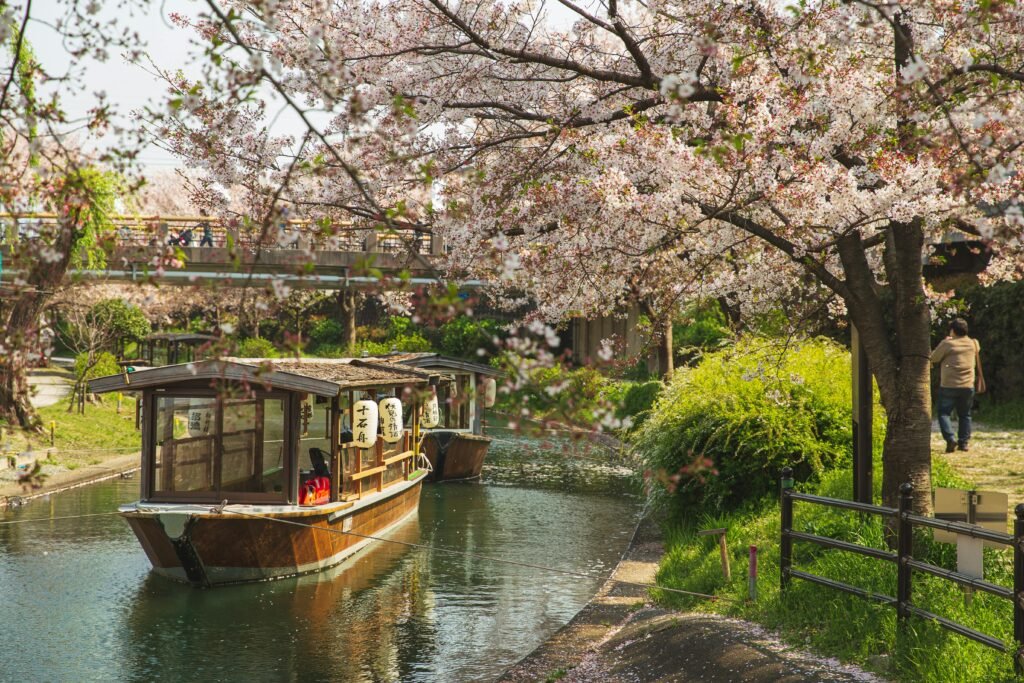
Conclusion
This two-week Japan itinerary is perfect for first-time visitors or anyone eager to experience Japan in depth. Each day is thoughtfully planned to strike a balance between adventure and relaxation, making your journey both smooth and unforgettable.
Planning your trip doesn’t have to feel overwhelming. With this guide, the stress and logistics are already taken care of, so you can focus on what really matters—soaking up the culture, savoring the food, and creating memories to last a lifetime.
Feel free to save this itinerary for later, and I’d love to hear from you—what’s the one experience in Japan you’re most excited to try first?

